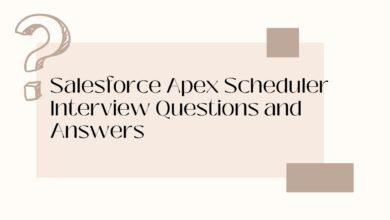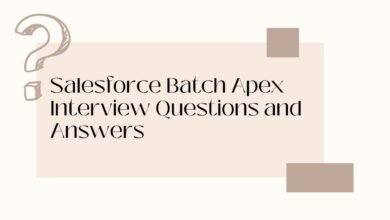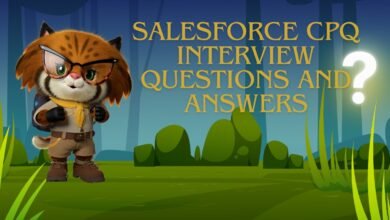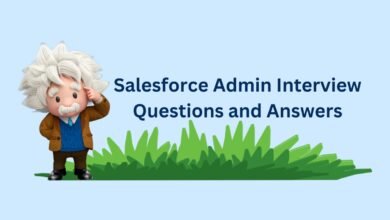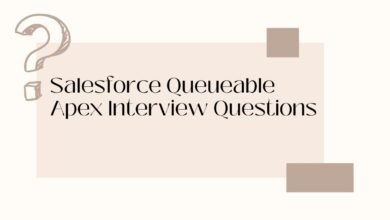Salesforce CPQ Interview Questions and Answers: Part 2
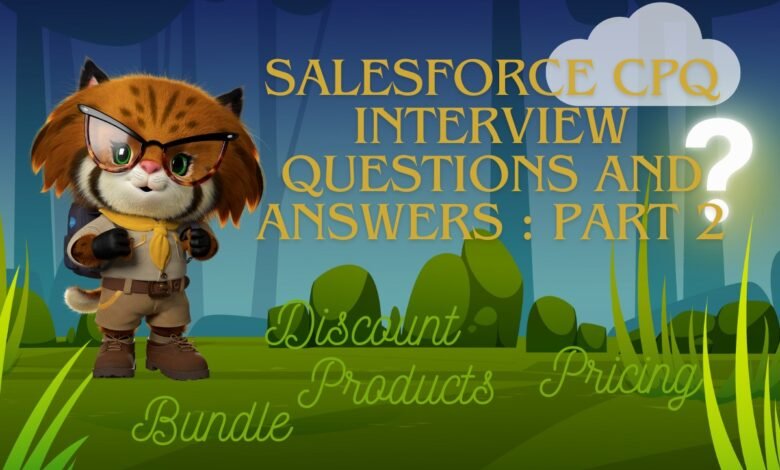
1. How we can restrict the Options to only 1 in feature?
- Min Option: 1
- Max Option: 1
- We cannot select more than 1 product option in the configuration page for that feature.
2. How we can Expanded and Collapsed a Bundle?
Set up->Installed Package-> CPQ-> Configure-> Line Editor->
Enable Large Quote Experience = Enable
Enable Expand/Collapse Bundles= Enable
Default Bundle Setting= Select ( Collapsed/ Expanded)
3. How to create Bundle within Bundle?
Add the child bundle as the option to the parent bundle.
4. How can I ensure that a product associated with a bundle is not sold independently?
Navigate to the product page and enable the “Component” option.
5. How do I configure a product to be sold as free of cost, either bundled or independently?
To set a product as free of cost, go to the product page and enable the “Optional” option.
6. How can we sell a product independently with its own pricing while offering it for free within a bundle?
Go to Product option page and enable “Bundled“.
7. How we can choose to charge Subscription based products
Setup-> Installed Package -> CPQ -> Configure -> Subscriptions and Renewals ->Subscription Prorate
Precision ->Day/Month/Monthly+Daily
8. Can we add products in the cart without their pricing?
No, we cannot see the product in cart.
9. Explain price waterfall.
Price waterfall refers to a visual representation or breakdown of how the final price for a product or service is calculated.
| Original Price | Pricebook Price |
| List Price | PB Price, Block Price, POT, Option Price |
| Special Price | Cost Plus Markup, Contracted price |
| Regular Price | After Volume Discount |
| Customer Price | After Manual Discount |
| Partner Price | After Partner Discount |
| Distributor Price | After Distributor Discount |
| Net Price | After All discount |
10. What is Block Price?
Block pricing is useful when you sell products by packs or groups of various quantities and want to represent the pack as a single quote line.
For example, a pack of 1–10 units costs $10, while a pack of 11–20 units costs $18. Sales reps can also use decreasing per-unit costs toward the end of each range as a selling incentive.
| Block Tier | Lower Bound | Upper Bound | Price |
|---|---|---|---|
| 1 – 10 Units | 1 | 11 | $1000 |
| 11 – 20 Units | 11 | 21 | $1500 |
| 21+ Units | 21 | $1500 + $25/unit |
11. What is OverageRate?
The OverageRate special field allows you to enter an additional per unit charge within Block Price tiers. This is added on top of the block price selected and calculated by taking the difference between the minimum quantity for the block and the quantity entered for that line item:
Block price = price for the block + ((quantity – minimum quantity for block) * overage rate)
12. How can we configure a product’s pricing to be based on the Percent Of Total?
If a product’s pricing method is defined as POT then it will get calculated based on the CART value.
- For Standalone:
Pricing Section->Pricing Method -> Percent of Total
Then go to, Subscriptions Section -> Percent of Total (%) -> Define the POT value - For Subscription:
Subscriptions Section -> Subscription Pricing -> Percent of Total
Then go to, Subscriptions Section -> Percent of Total (%) -> Define the POT value
13. How is the Percent Of Total (POT) calculated in the cart, and does it include both standalone and subscription products?
By default, it will not include subscription-based products.
14. How can subscription-based products be included in the POT calculation for the Keyboard?
If we need to include subscription-based products as a part of POT calculation then:
Include in Percent of Total: Checked/Enable
15. If certain standalone products need to be excluded from the POT calculation, what should be done?
If we need to exclude any standalone products from the POT calculation then:
Exclude in Percent of Total: Checked/Enable
16. How can we limit Percent Of Total (POT)?
Go to Percent of Total Constraint: List Price is Minimum/ List price is Maximum And define the list price accordingly.
17. What is Multi-Dimensional Quoting(MDQ)?
- MDQ Allows you to segment a particular product into multiple time segment. Within single quote on the QLE.
- It allows you to do segmented price for a product. Hence, a particular product can split into multiple
time segment. (Generally, for a subscription-based product) - Each Segment can have its own quantity and discount.
- Year-over-Year Uplift can also be applied.
- Individual quote lines are created for each segment.
18. What is Option Constraints?
To Managing Product Dependencies. Option Constraints allow you to enable or disable a Product Option for selection based on the selection of another product option in the same Bundle Product.
It is similar to the Dependent and controlling picklist in standard salesforce. Controlling Field and Dependent Field.
Type : Dependency, Exclusion
- Dependency: Selecting the Constraining Option causes Salesforce CPQ to enable the Constrained Option for selection
- Exclusion: Users can’t select the Constrained Option if they’ve selected the Constraining Option.

